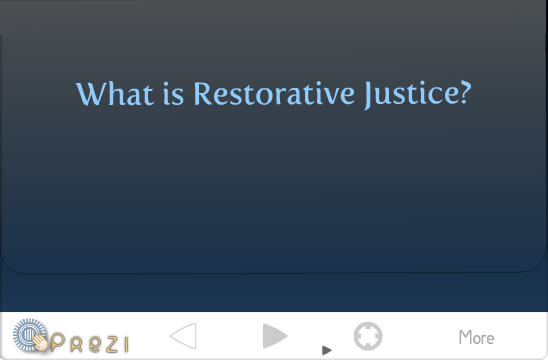
Facebook
Rehabilitation
The process and idea of rehabilitation is rarely used by the traditional criminal justice systems. The offenders are punished, and after serving their time, released back into society with the stigma of having a record. With the instruments of the traditional criminal justice systems it is hard to fight the common misbelief, that once a crime is committed, the offender stays criminal for life. Also changing the attitudes of inmates in order for them to become helpful to society instead of harmful to society is a challenge.
Restorative justice embraces the assumption of rehabilitation, that people are not permanently criminal and it is possible to restore a criminal to a useful life in which they contribute to themselves and to society. Restorative justice also has a wider selection of instruments to achieve rehabilitation.The restoration of the harm done by the crime committed is a crucial element of as well as an important stage in the process leading to rehabilitaion. The rehabilitation of an offender requires actions from all parties of the victim-offender-society triangle, but if successful, benefits everyone involved.
The MEREPS Project aims to test if restorative justice practices, when used in a prison setting, can lead to succesful rehabilitation and, as a further result a reintegration of the offender into society. Finding a rehabilitation strategy that works effectively in prison settings will lead to significant reduction of the re-offending rate.






